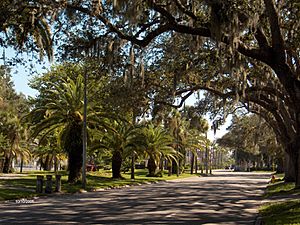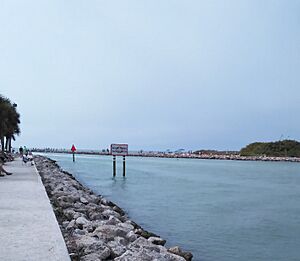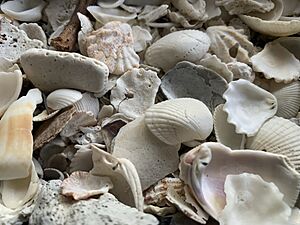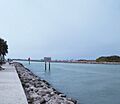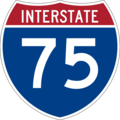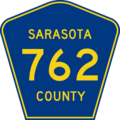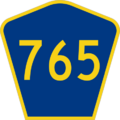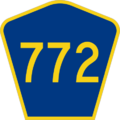Venice, Florida facts for kids
Quick facts for kids
Venice, Florida
|
||
|---|---|---|
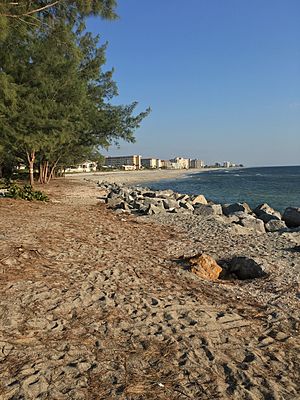
Venice's Beachfront from Humphris Park
|
||
|
||
| Nickname(s):
Shark Tooth Capital of the World
|
||
| Motto(s):
"City on the Gulf"
|
||
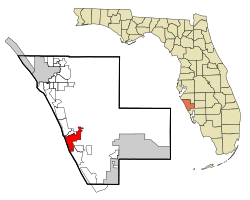
Location in Sarasota County and the state of Florida
|
||
| Country | United States | |
| State | Florida | |
| County | Sarasota | |
| Settled |
|
|
| Incorporated |
|
|
| Named for | Venice, Italy | |
| Government | ||
| • Type | Council–manager | |
| Area | ||
| • City | 17.78 sq mi (46.05 km2) | |
| • Land | 16.13 sq mi (41.77 km2) | |
| • Water | 1.65 sq mi (4.28 km2) | |
| Elevation | 10 ft (3 m) | |
| Population
(2020)
|
||
| • City | 25,463 | |
| • Estimate
(2022)
|
27,272 | |
| • Density | 1,578.71/sq mi (609.54/km2) | |
| • Metro | 833,716 (US: 71st) | |
| • Metro density | 542.0/sq mi (209.3/km2) | |
| Time zone | UTC−5 (Eastern (EST)) | |
| • Summer (DST) | UTC−4 (EDT) | |
| ZIP codes |
34284–34287, 34290–34293
|
|
| Area code(s) | 941 | |
| FIPS code | 12–73900 | |
| GNIS feature ID | 0292749 | |
Venice is a city located in Sarasota County, Florida, in the United States. It's known for its beautiful beaches and is often called the "Shark Tooth Capital of the World." The city includes an area called "Venice Island," which is connected to the mainland by bridges over the Intracoastal Waterway. In 2020, about 25,463 people lived in Venice. It is part of the larger North Port–Bradenton–Sarasota area.
Contents
History of Venice, Florida
The land where Venice now stands was first home to Paleo-Indians around 8200 BCE. These early people hunted large animals. As the climate changed, their descendants, known as Archaic peoples, learned new ways to make tools. We know this from stone tools found in Venice.
Over many years, different groups lived here. When the Spanish arrived in the 1500s, they met Mound Builders. These people built large earth mounds. Venice was a meeting point between two cultures, the Tocobaga and the Calusa. You can find signs of both groups in the area.
Early Settlers and Naming the City
White settlers first arrived in the 1870s. The area was first called "Horse and Chaise" because of a tree that looked like a horse and carriage. This tree was a landmark for fishermen.
In the 1870s, Robert Rickford Roberts started a farm near a bay now named Roberts Bay. Later, in 1883, Francis H. "Frank" Higel came to Venice with his family. He bought land and started a business canning citrus fruits like jams and orange wine.
Higel opened a post office in 1885 for the thirty people living there. He named it Eyry. This post office closed later that year. In 1888, a new post office opened. Higel suggested the name "Venice" because the area reminded him of the famous canal city in Italy.
Developing the City
In the 1920s, during a time when land in Florida was very popular, a famous surgeon named Fred H. Albee bought land in Venice. He hired John Nolen to design the city's streets and layout. Albee then sold the land to a group called the Brotherhood of Locomotive Engineers, but Nolen stayed on as the city planner. The first parts of the city were built between 1925 and 1926.
In 1926, a volunteer fire department was started. They even bought a fire engine that had been damaged in a big hurricane. The first library also opened in 1926, started by a women's club. It was just a few books in a store. The library moved several times before a new building was built in 1965. This building was replaced in 2018 by the William H. Jervey Jr. Venice Library.
Venice officially became the "Town of Venice" on July 1, 1926. It became the "City of Venice" less than a year later, on May 9, 1927.
Recent Hurricane Events
Venice has faced strong hurricanes. On October 9, 2024, Hurricane Milton hit just north of Venice. The city experienced very strong winds and a large storm surge. This happened less than two weeks after Hurricane Helene also brought several feet of storm surge to Venice.
Geography of Venice
Venice is located at about 27 degrees North and 82 degrees West. The city covers about 43.1 square kilometers (16.6 square miles). Most of this area is land, about 39.5 square kilometers (15.2 square miles). The rest, about 3.5 square kilometers (1.4 square miles), is water.
Climate in Venice
Venice has a humid subtropical climate. This means it has hot, humid summers and generally mild winters. It's very close to a tropical savanna climate, which means it has clear wet and dry seasons.
| Climate data for Venice, Florida, 1991–2020 normals, extremes 1927–present | |||||||||||||
|---|---|---|---|---|---|---|---|---|---|---|---|---|---|
| Month | Jan | Feb | Mar | Apr | May | Jun | Jul | Aug | Sep | Oct | Nov | Dec | Year |
| Record high °F (°C) | 89 (32) |
89 (32) |
90 (32) |
95 (35) |
98 (37) |
100 (38) |
100 (38) |
99 (37) |
99 (37) |
97 (36) |
91 (33) |
89 (32) |
100 (38) |
| Mean maximum °F (°C) | 83.3 (28.5) |
84.1 (28.9) |
86.9 (30.5) |
90.1 (32.3) |
93.9 (34.4) |
95.4 (35.2) |
95.5 (35.3) |
96.1 (35.6) |
94.8 (34.9) |
92.5 (33.6) |
88.1 (31.2) |
84.3 (29.1) |
96.9 (36.1) |
| Mean daily maximum °F (°C) | 72.4 (22.4) |
75.0 (23.9) |
77.9 (25.5) |
82.5 (28.1) |
87.3 (30.7) |
89.9 (32.2) |
91.5 (33.1) |
91.5 (33.1) |
90.0 (32.2) |
85.8 (29.9) |
80.0 (26.7) |
75.0 (23.9) |
83.2 (28.4) |
| Daily mean °F (°C) | 62.0 (16.7) |
64.6 (18.1) |
67.7 (19.8) |
72.5 (22.5) |
77.5 (25.3) |
81.4 (27.4) |
82.9 (28.3) |
83.1 (28.4) |
81.6 (27.6) |
76.6 (24.8) |
69.9 (21.1) |
64.9 (18.3) |
73.7 (23.2) |
| Mean daily minimum °F (°C) | 51.6 (10.9) |
54.2 (12.3) |
57.5 (14.2) |
62.5 (16.9) |
67.8 (19.9) |
72.9 (22.7) |
74.3 (23.5) |
74.7 (23.7) |
73.2 (22.9) |
67.5 (19.7) |
59.7 (15.4) |
54.8 (12.7) |
64.2 (17.9) |
| Mean minimum °F (°C) | 34.3 (1.3) |
37.7 (3.2) |
42.9 (6.1) |
50.3 (10.2) |
59.1 (15.1) |
68.3 (20.2) |
70.8 (21.6) |
71.5 (21.9) |
68.6 (20.3) |
54.9 (12.7) |
46.2 (7.9) |
39.8 (4.3) |
32.7 (0.4) |
| Record low °F (°C) | 23 (−5) |
26 (−3) |
31 (−1) |
38 (3) |
49 (9) |
56 (13) |
62 (17) |
65 (18) |
60 (16) |
36 (2) |
29 (−2) |
22 (−6) |
22 (−6) |
| Average precipitation inches (mm) | 2.68 (68) |
2.00 (51) |
2.97 (75) |
2.47 (63) |
3.25 (83) |
7.81 (198) |
7.39 (188) |
8.34 (212) |
7.16 (182) |
3.35 (85) |
1.54 (39) |
2.31 (59) |
51.27 (1,302) |
| Average precipitation days (≥ 0.01 in) | 7.5 | 5.4 | 5.9 | 5.3 | 6.5 | 12.2 | 14.9 | 16.0 | 14.4 | 8.1 | 4.7 | 6.4 | 107.3 |
| Source: NOAA | |||||||||||||
Venice Population Facts
| Historical population | |||
|---|---|---|---|
| Census | Pop. | %± | |
| 1930 | 309 | — | |
| 1940 | 507 | 64.1% | |
| 1950 | 727 | 43.4% | |
| 1960 | 3,444 | 373.7% | |
| 1970 | 6,648 | 93.0% | |
| 1980 | 12,153 | 82.8% | |
| 1990 | 16,922 | 39.2% | |
| 2000 | 17,764 | 5.0% | |
| 2010 | 20,748 | 16.8% | |
| 2020 | 25,463 | 22.7% | |
| U.S. Decennial Census | |||
The population of Venice has grown a lot over the years. In 2020, there were 25,463 people living in the city. This was a big jump from 20,748 people in 2010.
| Race | Pop 2010 | Pop 2020 | % 2010 | % 2020 |
|---|---|---|---|---|
| White (NH) | 19,762 | 23,466 | 95.25% | 92.16% |
| Black or African American (NH) | 113 | 172 | 0.54% | 0.68% |
| Native American or Alaska Native (NH) | 24 | 29 | 0.12% | 0.11% |
| Asian (NH) | 152 | 244 | 0.73% | 0.96% |
| Pacific Islander or Native Hawaiian (NH) | 3 | 5 | 0.01% | 0.02% |
| Some other race (NH) | 14 | 62 | 0.07% | 0.24% |
| Two or more races/Multiracial (NH) | 129 | 540 | 0.62% | 2.12% |
| Hispanic or Latino (any race) | 551 | 945 | 2.66% | 3.71% |
| Total | 20,748 | 25,463 | 100.00% | 100.00% |
In 2020, there were 12,521 households in Venice. About 6.4% of the people were under 18 years old. A larger part of the population, 61.9%, was 65 years or older. Many people in Venice, 3,204, were military veterans. Also, 9.5% of the people living in Venice were born in other countries. More than half of the population (54.6%) were female.
The average household income in Venice in 2020 was $61,953. Most homes (90.9%) had a computer, and many (81.3%) had a fast internet connection.
Arts and Culture in Venice
Fun Annual Events
Venice is famous for being the "Shark's Tooth Capital of the World." Every year, the city holds a Shark's Tooth Festival. This event celebrates the many fossilized shark's teeth that can be found on its beaches. It's a great place to hunt for these ancient treasures!
Museums and Cool Places to See
Many buildings and areas in Venice are listed on the National Register of Historic Places. This means they are important historical sites. Some of these include:
- Armada Road Multi-Family District
- Blalock House
- Eagle Point Historic District
- Edgewood Historic District
- Hotel Venice
- House at 710 Armada Road South
- Johnson-Schoolcraft Building
- Levillain-Letton House
- Triangle Inn
- Valencia Hotel and Arcade
- Venezia Park Historic District
- Venice Depot
Theatre and Music Scene
The Venice Theatre is a very large community theater. It's one of the biggest in the United States for a city its size. They put on many shows and performances throughout the year.
Media in Venice
Venice has its own newspaper called the Venice Gondolier Sun. It comes out twice a week and prints about 13,500 copies.
There is also a TV station, WVEA-TV, that is licensed to Venice. This station is part of the Univision network and broadcasts from nearby Riverview.
Transportation in Venice
Main Roads
 I-75: This is the main highway that runs through the inland parts of Venice.
I-75: This is the main highway that runs through the inland parts of Venice. U.S. 41 (Tamiami Trail): This is a major road that goes north and south through the city.
U.S. 41 (Tamiami Trail): This is a major road that goes north and south through the city. U.S. 41 Bypass: This road goes around Venice Island and the city.
U.S. 41 Bypass: This road goes around Venice Island and the city. State Road 681: This road connects to Venice. It used to be the end of I-75 in the early 1980s.
State Road 681: This road connects to Venice. It used to be the end of I-75 in the early 1980s. County Road 762 (Laurel Road): This road goes east and west, connecting US-41 to I-75 in the northern part of the city.
County Road 762 (Laurel Road): This road goes east and west, connecting US-41 to I-75 in the northern part of the city. County Road 765 (Jacaranda Boulevard): This road goes north and south, near the western edge of the city.
County Road 765 (Jacaranda Boulevard): This road goes north and south, near the western edge of the city. County Road 772 (Venice Avenue): This is the main east-west road in Venice.
County Road 772 (Venice Avenue): This is the main east-west road in Venice.
Trains and Air Travel
Venice used to have passenger train service until 1971. The famous Orange Blossom Special train used to stop here.
For air travel, there are two airports. The Venice Municipal Airport is very close to the city center. It's mostly used by private planes. For bigger flights, like domestic and international trips, people use the Sarasota–Bradenton International Airport, which is about 30 miles away.
Law Enforcement in Venice
The Venice Police Department keeps the city safe. Tom Mattmuller is the current Chief of Police. The department has 73 members and special teams for bike patrols, traffic patrols, and even boat patrols.
Famous People from Venice
Many interesting people have lived in Venice, including:
- Brian Aherne, an English actor
- Dri Archer, an American football player
- Trey Burton, an American football player
- Hector A. Cafferata Jr., a U.S. Marine who received the Medal of Honor for his bravery in the Korean War
- Walter Farley, the author of The Black Stallion books
- Dick Hyman, a jazz musician
- Forrest Lamp, a professional football player
- Alvin Mitchell, an American football player
- Tom Tresh, a professional baseball player
- Steve Trout, a former major league baseball pitcher
- Early Wynn, a professional baseball player
Images for kids
See also
 In Spanish: Venice (Florida) para niños
In Spanish: Venice (Florida) para niños


